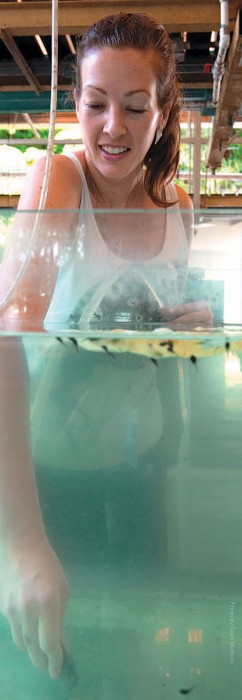The stowaway parasite, or: Why haven’t cane toads taken over the world?
Cane toads are so prevalent in Australia that gathering specimens is a snap: “You can spot them from a moving car quite easily, open the door and scoop one off the road without even having to stop,” says Crystal Kelehear Graham, exaggerating only slightly. “In Panama, they are a lot harder to find.”
Native to Central and South American, the cane toad (Rhinella marina) has been introduced to many regions of the world—particularly the Pacific—for the biological control of agricultural pests. However, after its introduction in Australia in 1935 to control beetles that damaged sugar cane, the toxic cane toad quickly became a plague. It was not very successful at reducing the targeted gray-backed beetle population (partly because the beetles lived at the top of the sugar cane plants and the toads don’t climb) and instead has developed into a major threat to Australian biodiversity. There has been a marked decrease in the populations of many native reptiles,
In its travels halfway around the world, the cane toad may have eluded most of its natural enemies save one: a parasite that stowed away in its lungs. Is this stowaway the key to containing the spread of the toad? That’s what Graham, a postdoctoral fellow at the Smithsonian Tropical Research Institute, aims to find out. Her research at the University of Sydney showed that the lung nematode definitely had a negative effect on tadpole survival, growth, movement and feeding ability. “Yet this itself is perplexing,” Graham says. “Yes, the parasite is common, yes, it has a negative effect on its toad host…yet toads are still charging across the continent at an alarming pace.”
Graham hopes to find out why by studying the toads in their native habitat—where they are no so prevalent you can scoop them off the side of the road. “Everybody wants to study and control non-native species in their introduced range,” she says. “Not too many people seem to go backwards and figure out why they are not totally out of control in their native range.”
This post is based on an article written by Sean Mattson in the September 20 edition of STRI News.
Posted: 26 September 2013
-
Categories:
Feature Stories , Science and Nature , Tropical Research Institute





